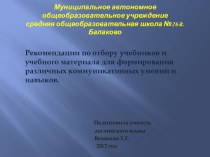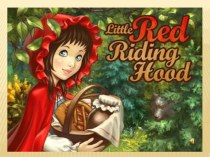- Главная
- Разное
- Бизнес и предпринимательство
- Образование
- Развлечения
- Государство
- Спорт
- Графика
- Культурология
- Еда и кулинария
- Лингвистика
- Религиоведение
- Черчение
- Физкультура
- ИЗО
- Психология
- Социология
- Английский язык
- Астрономия
- Алгебра
- Биология
- География
- Геометрия
- Детские презентации
- Информатика
- История
- Литература
- Маркетинг
- Математика
- Медицина
- Менеджмент
- Музыка
- МХК
- Немецкий язык
- ОБЖ
- Обществознание
- Окружающий мир
- Педагогика
- Русский язык
- Технология
- Физика
- Философия
- Химия
- Шаблоны, картинки для презентаций
- Экология
- Экономика
- Юриспруденция
Что такое findslide.org?
FindSlide.org - это сайт презентаций, докладов, шаблонов в формате PowerPoint.
Обратная связь
Email: Нажмите что бы посмотреть
Презентация на тему Harriet Beecher Stowe (1811-1896)
Содержание
- 2. I. OccupationWriterTeacherReformer
- 3. II. Known for author of Uncle Tom's
- 4. III. Family: Harriet Beecher Stowe was the
- 5. IV. Education: Ma'am Kilbourne's School Litchfield Academy Hartford Female Seminary (run by Catherine Beecher)
- 6. V. SummeryHarriet Beecher-Stowe is most famous for
- 7. VI. Uncle Tom's Cabin Major characters Major themes
- 8. Major charactersUncle Tom Eliza Eva Simon Legree Topsy
- 9. Uncle TomUncle Tom, the titular character, was
- 10. ElizaA slave (personal maid to Mrs. Shelby),
- 11. EvaEva, whose real name is Evangeline St.
- 12. Simon LegreeA villainous and cruel slave owner—a
- 13. Topsy A "ragamuffin" young slave girl of
- 14. Major themesThe Evil of SlaveryThe Incompatibility of Slavery & Christian ValuesThe Moral Power of Women
- 15. Скачать презентацию
- 16. Похожие презентации
I. OccupationWriterTeacherReformer


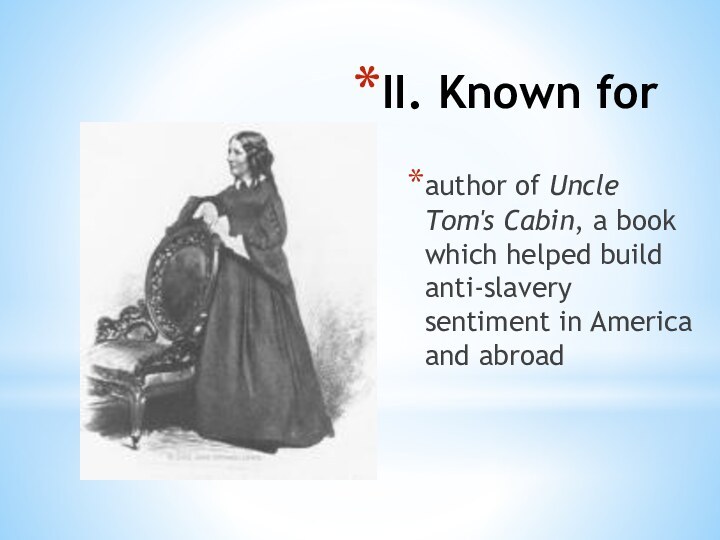

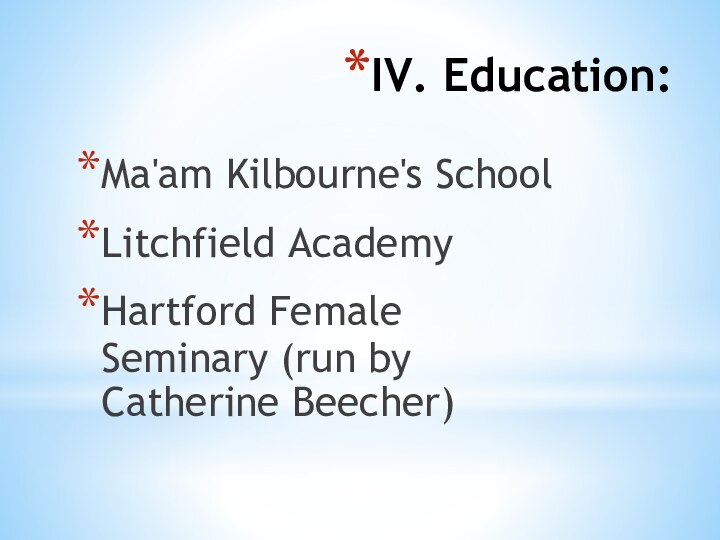
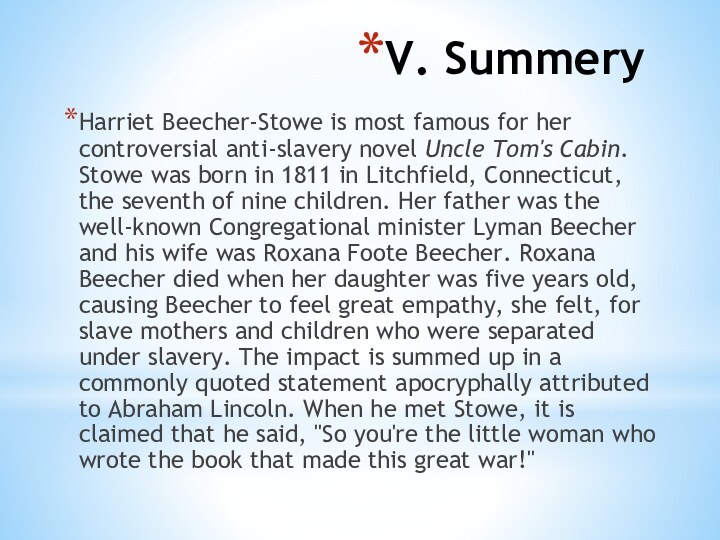


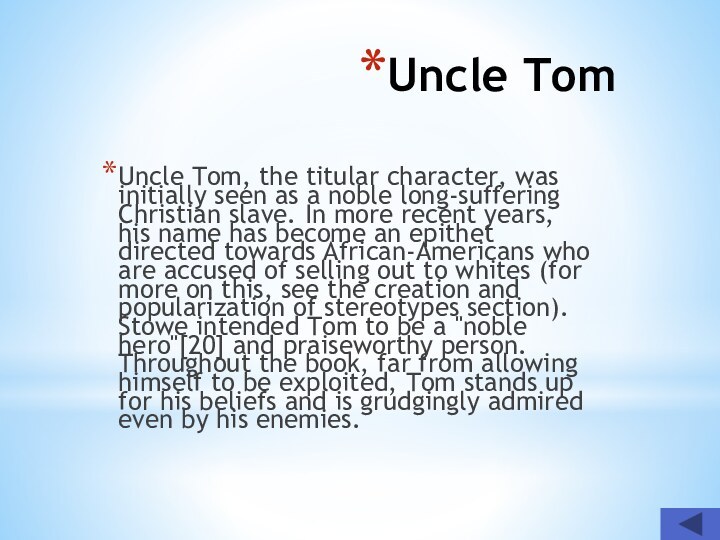
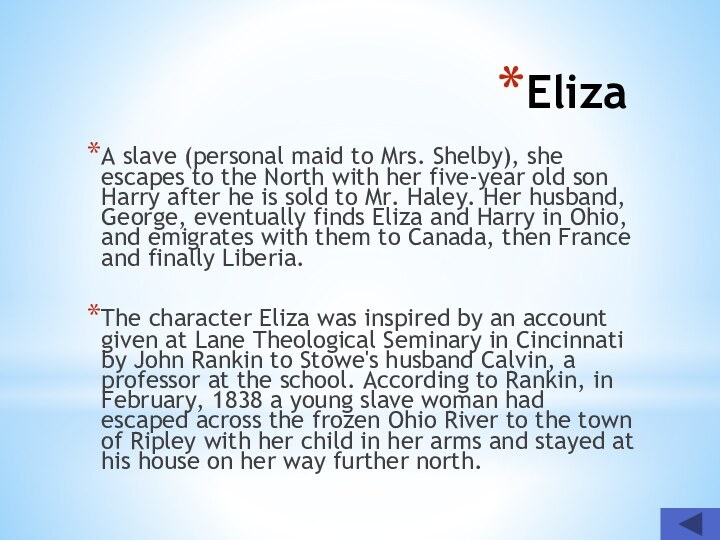
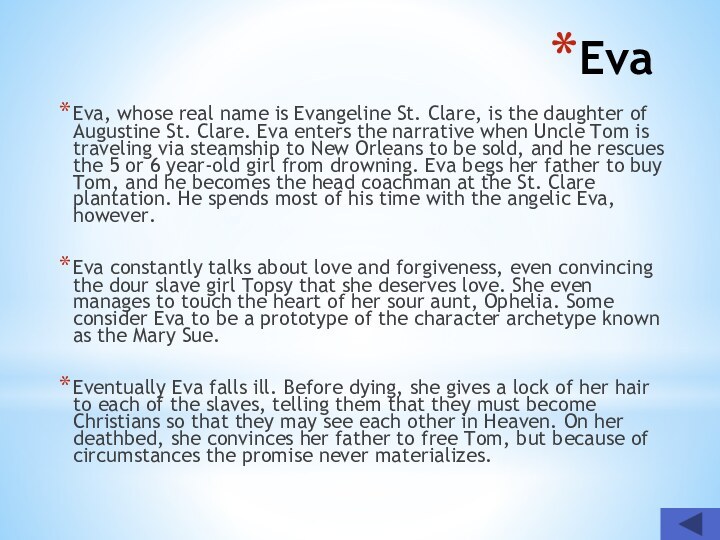
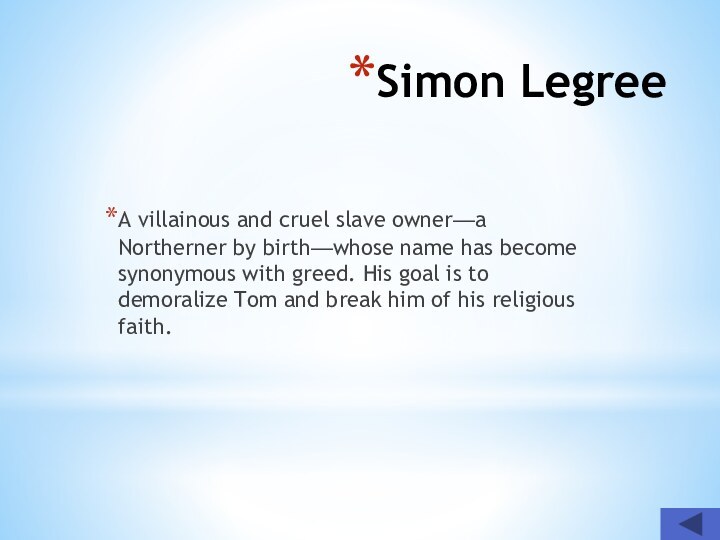



Слайд 4
III. Family:
Harriet Beecher Stowe was the seventh
child of Lyman Beecher and his first wife Roxana.
Father: Lyman Beecher (famous Congregationalist minister; president, Lane Theological Seminary, Cincinnati, Ohio)
Mother: Roxana Foote Beecher (granddaughter of General Andrew Ward; "mill girl" before marriage; died when Harriet was four)
brothers William Beecher, Edward Beecher, George Beecher, Henry Ward Beecher, Charles Beecher and half-brothers Thomas Beecher and James Beecher (five became ministers)
sisters Catherine Beecher and Mary Beecher, half-sister Isabella Beecher Hooker
Слайд 5
IV. Education:
Ma'am Kilbourne's School
Litchfield Academy
Hartford
Female Seminary (run by Catherine Beecher)
Слайд 6
V. Summery
Harriet Beecher-Stowe is most famous for her
controversial anti-slavery novel Uncle Tom's Cabin. Stowe was born
in 1811 in Litchfield, Connecticut, the seventh of nine children. Her father was the well-known Congregational minister Lyman Beecher and his wife was Roxana Foote Beecher. Roxana Beecher died when her daughter was five years old, causing Beecher to feel great empathy, she felt, for slave mothers and children who were separated under slavery. The impact is summed up in a commonly quoted statement apocryphally attributed to Abraham Lincoln. When he met Stowe, it is claimed that he said, "So you're the little woman who wrote the book that made this great war!"
Слайд 9
Uncle Tom
Uncle Tom, the titular character, was initially
seen as a noble long-suffering Christian slave. In more
recent years, his name has become an epithet directed towards African-Americans who are accused of selling out to whites (for more on this, see the creation and popularization of stereotypes section). Stowe intended Tom to be a "noble hero"[20] and praiseworthy person. Throughout the book, far from allowing himself to be exploited, Tom stands up for his beliefs and is grudgingly admired even by his enemies.
Слайд 10
Eliza
A slave (personal maid to Mrs. Shelby), she
escapes to the North with her five-year old son
Harry after he is sold to Mr. Haley. Her husband, George, eventually finds Eliza and Harry in Ohio, and emigrates with them to Canada, then France and finally Liberia.The character Eliza was inspired by an account given at Lane Theological Seminary in Cincinnati by John Rankin to Stowe's husband Calvin, a professor at the school. According to Rankin, in February, 1838 a young slave woman had escaped across the frozen Ohio River to the town of Ripley with her child in her arms and stayed at his house on her way further north.
Слайд 11
Eva
Eva, whose real name is Evangeline St. Clare,
is the daughter of Augustine St. Clare. Eva enters
the narrative when Uncle Tom is traveling via steamship to New Orleans to be sold, and he rescues the 5 or 6 year-old girl from drowning. Eva begs her father to buy Tom, and he becomes the head coachman at the St. Clare plantation. He spends most of his time with the angelic Eva, however.Eva constantly talks about love and forgiveness, even convincing the dour slave girl Topsy that she deserves love. She even manages to touch the heart of her sour aunt, Ophelia. Some consider Eva to be a prototype of the character archetype known as the Mary Sue.
Eventually Eva falls ill. Before dying, she gives a lock of her hair to each of the slaves, telling them that they must become Christians so that they may see each other in Heaven. On her deathbed, she convinces her father to free Tom, but because of circumstances the promise never materializes.















